Causes of mortality: In virtually every population so far studied, humans are the primary cause of death of bears after they leave their mother. Sport hunting is one of the main causes of mortality where they are legally hunted in North America (Alaska, Yukon, Northwest Territories and Nunavut), Europe (Norway, Sweden, Finland, Estonia, Slovakia, Romania, Georgia, Slovenia, Croatia, Bosnia and Herzegovia, Bulgaria), and Asia (Russia, Kazakhstan, Japan). Conflict-related mortality occurs when people retaliate against bears that have destroyed their property, killed livestock, or perceived as a threat to humans (sometimes just by being present). Illegal hunting or poaching exists in many countries as do highway and railway mortalities but these causes of mortality remain poorly documented. Next to human-caused mortality, intraspecific predation, usually by adult males, is the next leading cause of mortality of adult bears. Very few adult bears starve to death, but some die in accidents such as den collapse or snow or rock avalanches, while few appear to die of old age. Natural mortality is most prevalent for cubs or yearlings with their mother. Adult males may kill young bears that they suppose were fathered by a different male. Some cubs and yearlings starve and some are killed in accidents.
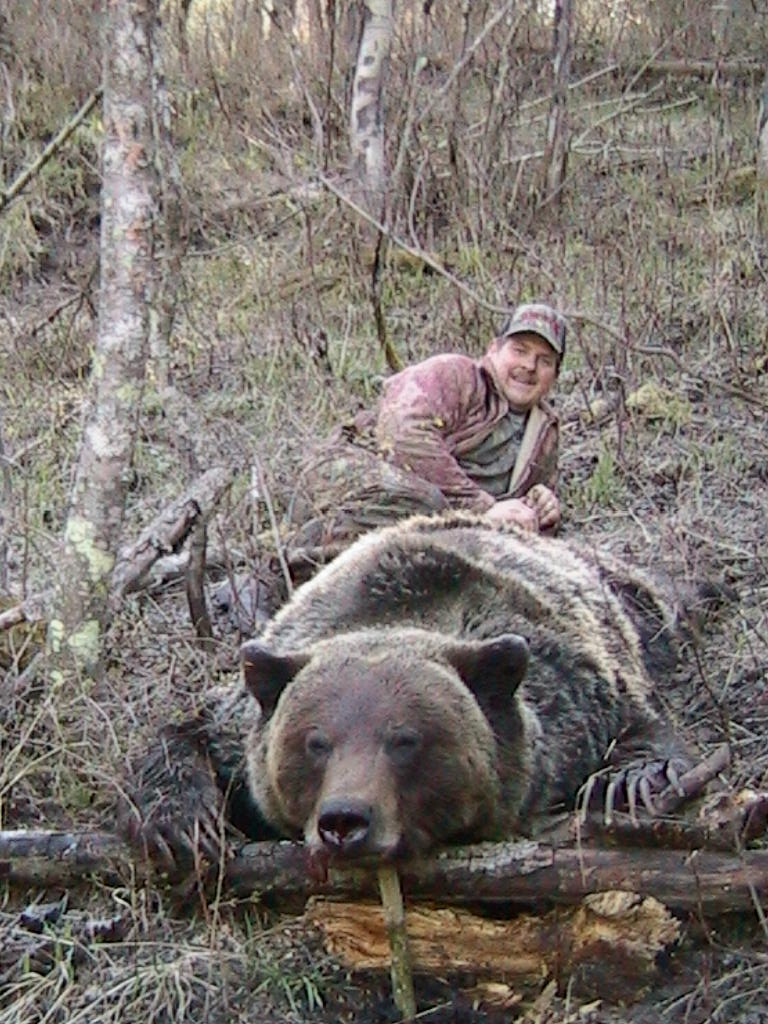
Brown bear_U arctos_British Columbia Canada_legally hunted bear_B McLellan
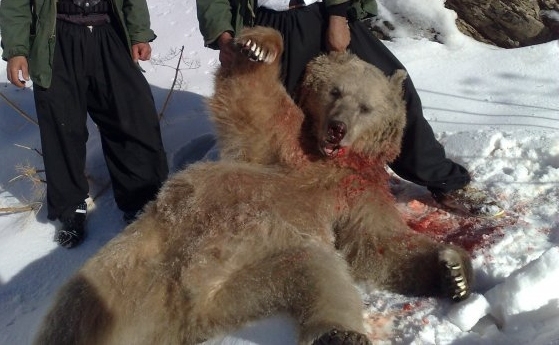
Brown bear_U arctos syriacus_Kurdistan Iraq_killed illegally purportedly in self-defence_K Ararat Nature Iraq
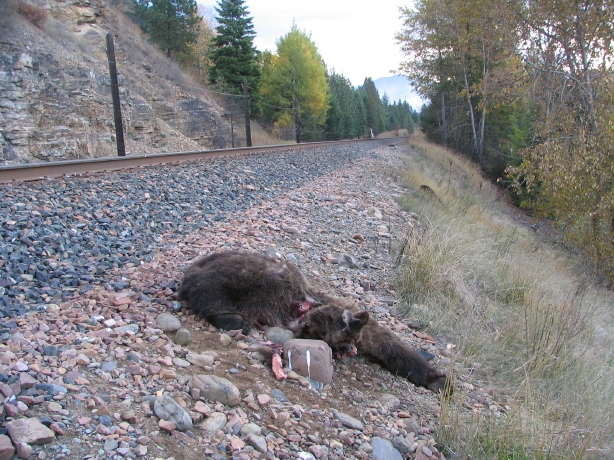
Brown bear_U arctos_northwest Montana USA_bear killed by a train_W Kasworm
Population estimation methods: Mark–recapture methods have commonly been used to estimate brown bear population sizes in North America and Europe. A widely-used technique employs DNA samples from hairs collected at barbed-wire hair traps or rubbing sites, or from scats. Ecological modeling has been used to extrapolate population estimates to unsurveyed areas where similar conditions exist.
In areas where bears can be seen from an aircraft (e.g., Alaska), population estimates have been derived using distance sampling along survey lines, or by distinguishing marked (radio-collared) from unmarked bears. In an alpine region of northern Pakistan, individual bears are visually-recognized by coat coloration. In several European countries where bears are hunted, such as Slovenia, Croatia and Romania, hunters make visual counts of bears seen on predetermined nights at permanent feeding sites. Standardized reports of these counts are summed and for decades were used to estimate the population size and to set hunting quotas. In Russia, which contains about half the world’s brown bears, population estimates are often derived from various sorts of visual counts and track counts (mainly tracks in snow), some of which have been mathematically related to population size. Less rigorous methods of assessing population size or trend include expert opinion, or indices derived from visual observations, sign surveys, and camera trapping.
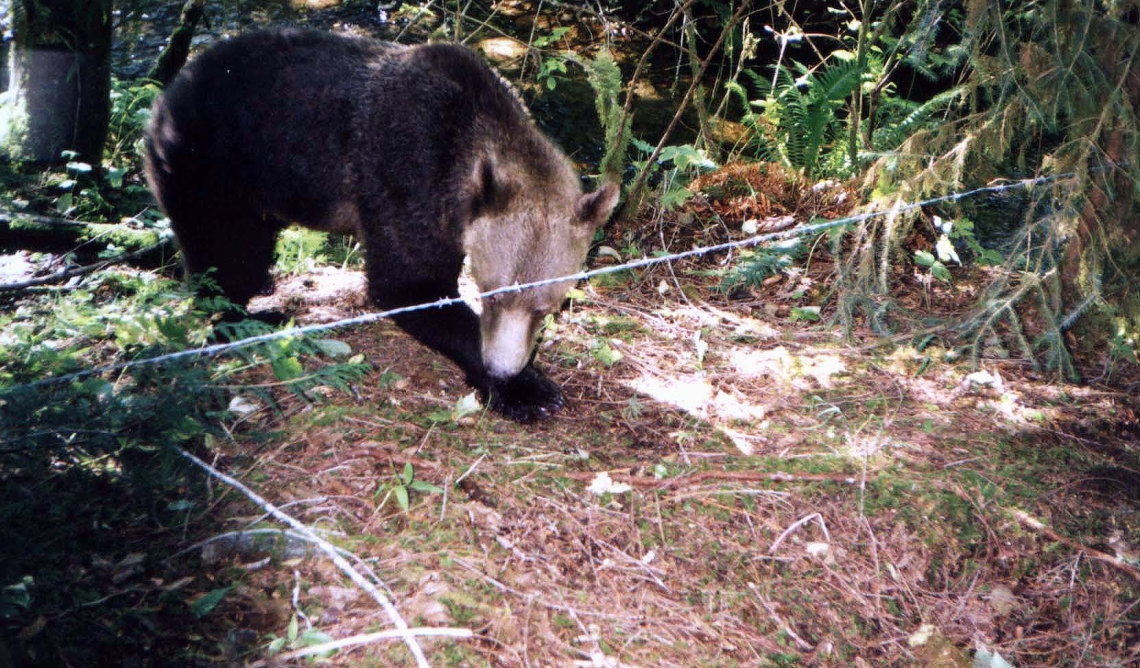
Brown bear_U arctos_British Columbia Canada_bear going under barb wire for hair and DNA collection_S Himmer

Brown bear_U arctos_British Columbia Canada_hair collected on barb wire for DNA based population estimation_M Proctor
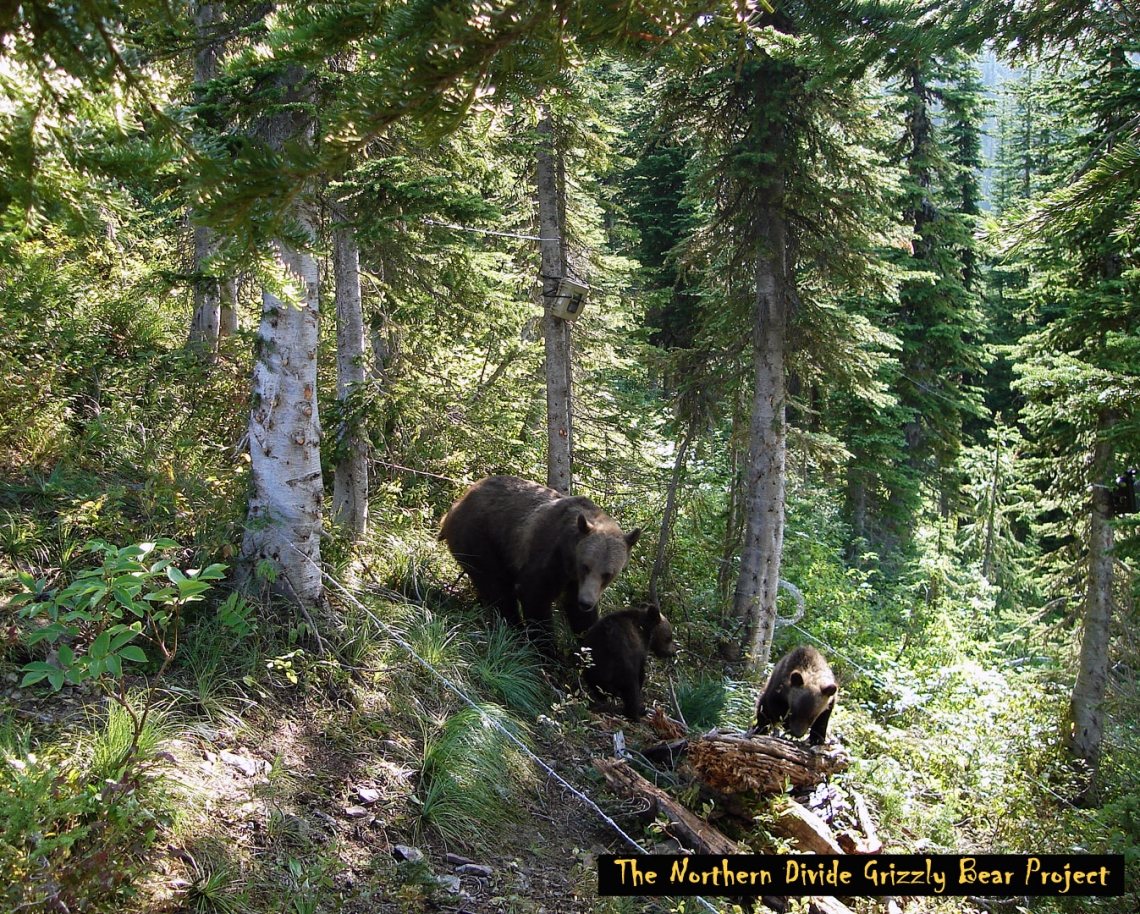
Brown bear_U. arctos_ Montana USA_ bear exploring barb wire DNA samping station_K Kendall
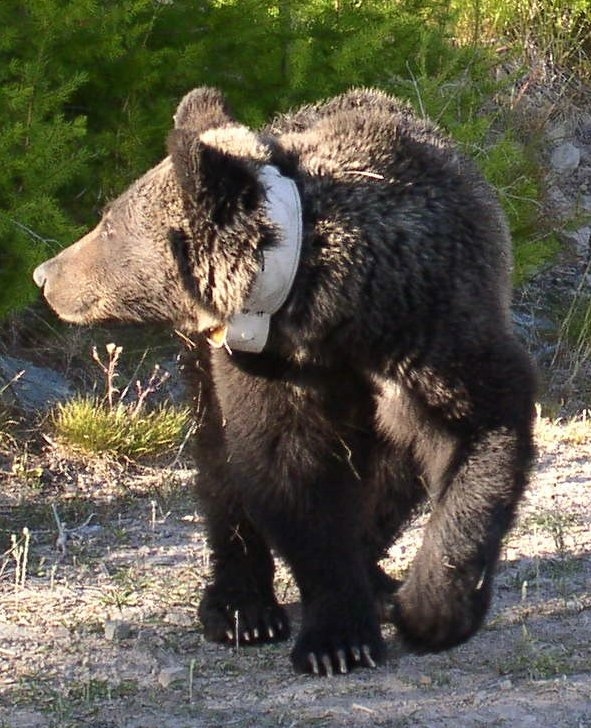
Brown bear_U arctos_Montana USA_radio collared bear_J. WIlliams
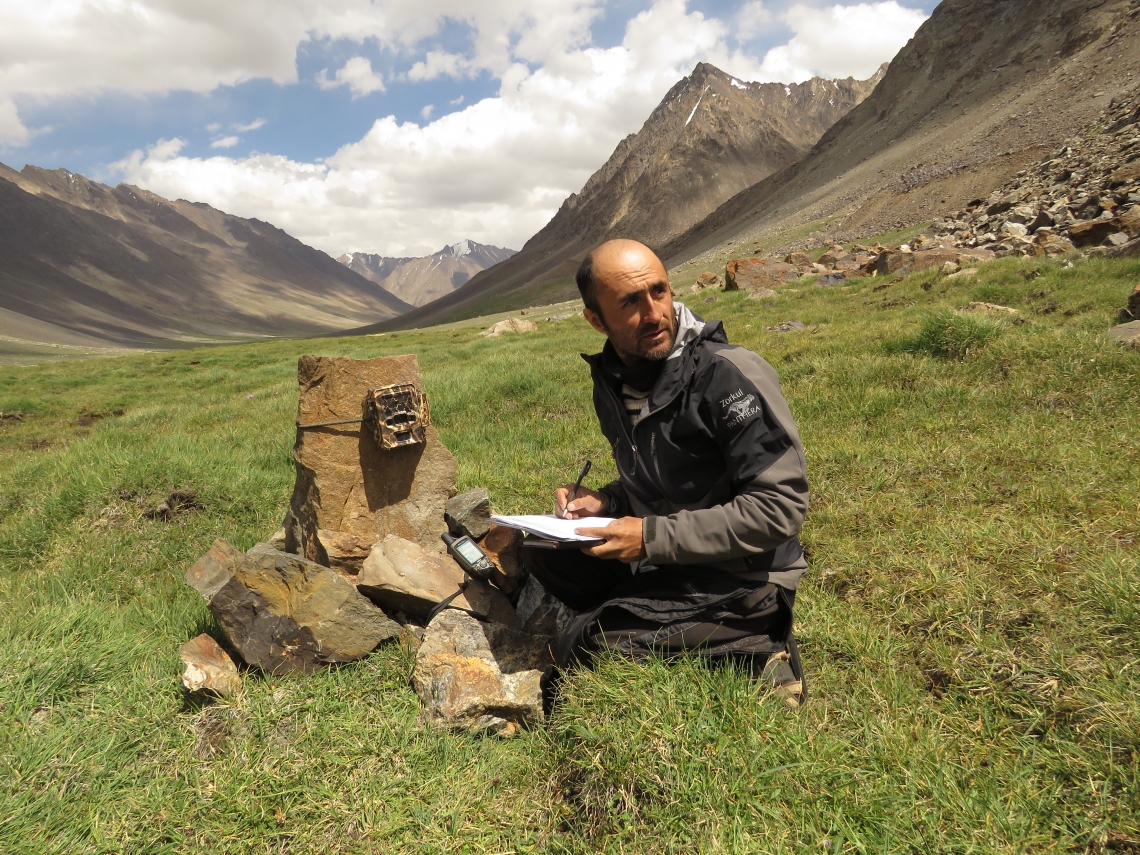
Brown bear_U arctos_Tajikistan, Central Asia_setting up camera trap_K Karimov
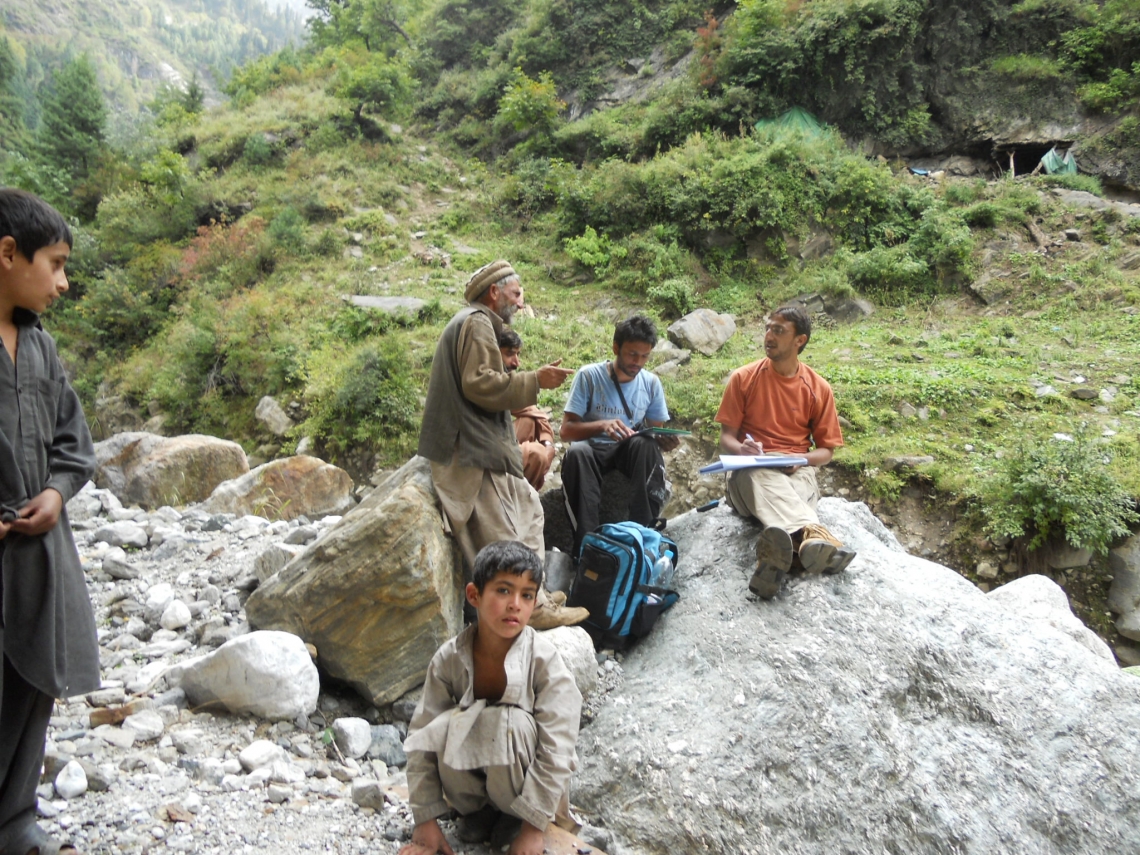
Brown bear_U arctos_Machiara National Park Pakistan_interview survey with local people_S Hameed
Local population estimates: Brown bear density estimates vary enormously, mostly associated with food availability. At one extreme are densities of 400–550 bears/1000 km2 on islands of Southeast Alaska and the Alaskan Peninsula, where spawning salmon are very abundant and bear dispersal is limited. Slovenia boasts the highest bear densities in Europe, with >400 bears/1000 km2 in the densest areas, supported by supplemental feeding. At the other extreme are densities of <5 bears/1000 km2 in areas with few high-energy food sources. Three rigorous estimates have been conducted of the extremely small (~30 bears), low density (~1 bear/1000 km2) population in the Gobi desert, which appears to be stable or even slightly increasing. Extremely low densities may occur in places like the Tibetan Plateau but no reliable estimates exist.
A total of 44 isolated brown bear populations have been identified around the world, distinct from the large continuous continental populations in North America and Asia (coincidentally there are also 44 range countries). Among these isolated populations, 14 are estimated to have less than 100 bears.
Global population estimate: There is no rigorous estimate of the number of brown bears globally, but extrapolating and summing a variety of estimates suggests that there are likely over 200,000, with approximately 60,000 in North America, 18,000 in Europe and over 120,000 in Asia. The population in Asia could be considerably higher, as the Russian population alone has been estimated to be at least 180,000 by some sources.
Population trends: Population trends have been estimated in several areas using age-specific survival and reproductive rates. These rates have been derived by following radio-collared bears or by using long-term capture histories of bears at DNA hair collection sites. Another less common approach involves comparing population estimates several years apart. Where hunters are well organized, trends have been estimated from bear sightings per 1000 hours of field time. Recently, long-term trends of large regional populations have been estimated using statistical population reconstruction of the age and sex data from hunter-killed bears. Trends have varied from populations increasing up to 14% per year to populations declining at 5% per year.
In Russia, home to most of the world’s brown bears, researchers tracked brown bear trends using a suite of methods including track counts, aerial surveys in established plots, and hunter surveys. Interestingly, they found that brown bears were in decline (as were several other large mammal species) in the decade after the Soviet Union collapsed (1991–2000), but rebounded significantly in the following decade (2001–2010).
When considering trend data, it is especially useful to look at longer-term data, as some reasonably stable populations fluctuate up or down in the short term. Many brown bear populations, such as some in southern Canada, northwestern U.S., and in Europe, have been increasing after decades or centuries of persecution. Conversely, some in Alaska have been intentionally reduced in an attempt to increase huntable ungulate populations. Others, particularly along their southern distribution in Asia may be in decline due to lack of conservation, although information in these areas is lacking.
As a general rule, brown bears in the northern portion of their distribution are in larger, robust populations, whereas populations along their southern distribution are characterized by extensive fragmentation, resulting in many small, sparse, fragile populations. This difference is due both to habitat quality and the tolerance and concentrations of people.